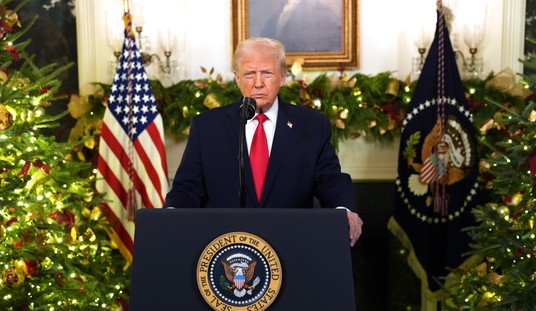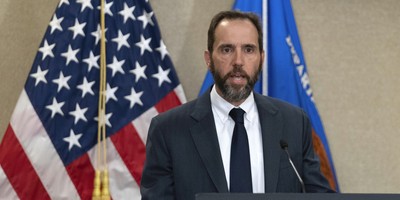The Islamic Republic of Iran is grappling with an escalating crisis of legitimacy unlike any it has faced in its 46-year history. Decades of economic mismanagement, entrenched corruption, and relentless political repression have steadily eroded public trust and shredded the regime’s fragile social contract, which once promised stability and basic welfare in exchange for obedience. That bargain lies in ruins. Inflation is soaring, unemployment is rampant, and the rial continues its catastrophic freefall, plunging millions of Iranians into destitution. Yet amid the misery, one group remains cocooned in privilege and untouched by the suffering of the people: the Islamic Revolutionary Guard Corps (IRGC).
Nowhere is the regime’s greed and incompetence more ruinous than in Iran’s water crisis, a man-made catastrophe that threatens to unmake the nation itself. What began as a chronic concern has metastasized into a full-blown hydro-political emergency. The taps are running dry from Isfahan to Khuzestan. Once-fertile plains have turned to dust. The mighty Zayandehrud River, the lifeblood of central Iran, has been reduced to a cracked riverbed. Farmers are marching in despair. And the architects of this disaster sit in Tehran, feasting on privilege while the countryside burns, and the wells run dry.
The clerical regime loves to blame “climate change” for Iran’s woes, but the truth is far more damning. Researchers at the Institute for National Security Studies (INSS) at Tel Aviv University warn that the country’s freshwater reserves are being depleted not only by rising temperatures, but by reckless human actions, rapid population growth, unregulated well-digging, and agricultural expansion far beyond sustainable capacity. In some central provinces, groundwater levels are falling by two meters per year. Around Tehran, the ground itself is sinking, collapsing by up to 22 centimeters annually as aquifers run dry.
This isn’t just an environmental crisis. It’s an existential one. Water scarcity is destroying Iran’s food security, forcing rural families off their land, accelerating migration to cities, and fueling public anger. It is transforming natural drought into political dynamite. Behind the curtain of mismanagement stands the IRGC, the regime’s praetorian guard, its economic juggernaut, and its chief instrument of repression. Over the decades, the IRGC has wormed its way into virtually every sector of Iran’s economy, from oil and gas to construction and telecommunications. Now it has its claws sunk deep into the country’s water infrastructure. The IRGC pays no tax and is answerable only to the Supreme Leader, Ali Khamenei. Its commanders have luxury villas in Turkey and the Gulf States and send their children to foreign universities.
Recommended
The Guards control massive dam-building and pipeline projects through front companies like Khatam al-Anbiya, a construction conglomerate that operates as both a cash cow and a political weapon. Under the guise of ‘development,’ the IRGC has diverted rivers, drained wetlands, and erected dams that enrich its cronies while devastating ecosystems. The most egregious example lies in Isfahan province. The Zayandehrud River, once the region’s beating heart, has been deliberately rerouted to feed steel plants and industrial complexes in Yazd, controlled by IRGC-linked entities. The result? A once-thriving agricultural basin has been turned into a wasteland. The farmers, whose livelihoods depended on the river’s flow, now watch their fields turn to salt and dust. When they protest, as they have done repeatedly, the regime responds with tear gas and batons.
The rot extends beyond the fields. Chronic water shortages and power cuts have crippled factories and small businesses across the country. Bakers, unable to run their ovens during extended blackouts, have taken to dumping spoiled dough outside government offices in protest, a pitiful symbol of national decay. The same power cuts halt irrigation pumps, stall hospitals, and plunge entire neighborhoods into darkness during the blistering summer heat. Yet while ordinary citizens endure daily hardship, the IRGC’s industrial empire continues to draw uninterrupted supplies of water and electricity. The contrast could not be starker. Iran has become a land where the regime’s cronies live in obscene comfort while millions scavenge for drinking water. The regime’s failure to provide even the most basic public goods, water, power, and bread, has stripped it of legitimacy. A state that cannot ensure life’s essentials cannot endure for long.
This crisis is not confined to Iran’s borders. A destabilized, desperate Iran is a threat to the wider region. As water scarcity spreads, internal migration will surge, rural communities will disintegrate, and social unrest will intensify. The protests that erupted in 2021 over water shortages in Khuzestan, where demonstrators chanted “I am thirsty!” as bullets flew, were a warning of what lies ahead. Even regime insiders admit that environmental collapse poses a greater long-term threat than sanctions or foreign pressure. Yet they remain paralyzed, too dependent on the IRGC’s economic muscle to challenge its predations. It is as if the state has been taken hostage by its own enforcers.
The international community must stop viewing Iran’s environmental crisis as a peripheral issue. It is a central indicator of the regime’s decay and a powerful lever for accountability. The IRGC’s control of water and infrastructure projects should be treated as part of its broader criminal enterprise. The EU and UK must follow the example of America, Canada and Australia and blacklist the IRGC as a foreign terrorist organization. Western governments must press for transparency in Iran’s environmental management and support independent monitoring bodies.
At the same time, they must give voice to the Iranian people, the farmers, the bakers, the families living on the front lines of this ecological war. Environmental activism in Iran is not merely about saving rivers or wetlands; it is about saving lives and defending human dignity. The cracked beds of the Zayandehrud and the parched plains of Isfahan tell a story of betrayal, of a regime that traded its people’s future for power and profit. The IRGC’s greed has drained not only Iran’s rivers but its legitimacy. Each dry well, each abandoned farm, each ruined bakery is a testament to the moral bankruptcy of the Islamic Republic. Iran’s crisis is not just political. It is existential. And as history has shown time and again, when the wells run dry, empires fall.
Struan Stevenson is the Coordinator of the Campaign for Iran Change (CiC). He was a member of the European Parliament representing Scotland (1999-2014), president of the Parliament's Delegation for Relations with Iraq (2009-14) and chairman of the Friends of a Free Iran Intergroup (2004-14). He is an author and international lecturer on the Middle East.
Editor’s Note: The Schumer Shutdown is here. Rather than put the American people first, Chuck Schumer and the radical Democrats forced a government shutdown for healthcare for illegals. They own this.
Help us continue to report the truth about the Schumer Shutdown. Use promo code POTUS47 to get 74% off your VIP membership.
























Join the conversation as a VIP Member